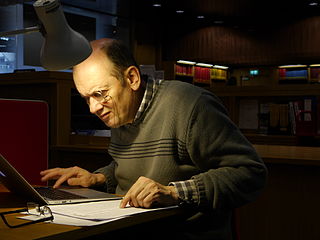
This post was written by Daria Cybulska, Programme Manager
It’s time to take a look back at the longest standing UK Wikimedian in Residence project.
When we were setting up a Wikimedian in Residence (WIR) in Scotland, in 2013, we planned it for a pilot lasting several months, designed to see if such a project is viable. Now, running at 18 months, it is Wikimedia UK’s longest-standing WIR, and a project that we can draw on for inspiring case studies!
To celebrate the first 12 months in the post, Ally Crockford, the resident, wrote a summary case study report. I encourage you to read the report, as it gives a brilliant introduction into the project, but, more importantly, critical views on what was achieved. You can also read about what the Library itself thought about the first year of the project – do have a look inside the report. You can download a version here.
The first ever residency in Scotland started in July 2013 and was extended thanks to strong delivery. This project, geographically removed from other areas of chapter activity, had a tall order of building a community that can support its activities – and we would like to think that it contributed to the developments in the area!
Overview of successful initiatives
- Media coverage – As an innovative project in Scotland, it attracted significant attention. It produced interest from the Open Knowledge Foundation Scotland, which then lead to more collaboration.
- Content improvement – Work aiming to change NLS policy on releasing digitised content started with month 1 in July 2013. Thanks to persistence and continual presence, June 2014 saw the first pilot releases – and the internal advocacy work is continuing!
- External partnerships – The project attracted much interest from external organisations, particularly libraries considering releasing content. The resident became a true spokesperson for open knowledge, and was e.g. invited to speak at CERN and Swiss National Library.
- Training and advocacy – An ongoing programme of training events for various departments was being delivered (e.g. Digital Access team). Teaching was incorporated into the organisation, e.g. Wikipedia & open access training was given during all staff annual ‘Learning at Work’ event. Advocacy is still a key focus of the residency, and internal seminars as well as external events addressing access and licensing for digitised public domain content are being organised for 2015
- Scottish community building – Much beyond the call of the project, the resident was involved in attracting volunteers to Wikimedia UK in Scotland via supporting regular meetups and organising joint events. It is worth noting, however, that the Library’s strategic purpose is described as ‘The National Library of Scotland exists to advance universal access to knowledge about Scotland and in Scotland.’ And so we discovered that the Library has the same interest as Wikimedia UK – building the community beyond that of the organisation itself.
While responses to the collaboration were generally positive throughout the Library, the results of the internal educational campaign regarding open knowledge took some time to manifest. Despite an initial perception amongst NLS managerial staff that a Wikimedia compatible open access policy for digital content would take several years to be realised, a proposed Metadata and Digital Content Licensing Policy was drafted, discussed, and approved over a period of approximately 8 months, coming into effect in April 2014. The policy itself also represents an incredible step on the Library’s part towards committing itself to open access – and a positive sign of the fact that often residency projects are catalysts for internal change!
In early June 2014, the first batches of content were uploaded to Wikimedia Commons. Photos from the construction of the Forth Bridge and the Tay Bridge disaster were the first to be uploaded, followed by sketches of locations around Scotland from the early 19th century publication Scotia Depicta (1804) and theatrical posters and photographs from the Weir Collection. In total, approximately 1100 images were uploaded in the first two months. Since then, GLAMWiki metrics tools like BaGLAMa2 and GLAMorous have offered insight into the impact of the release. As of January 2015, over 10% of the images have been incorporated into Wikipedia articles, a higher percentage than many GLAM releases. The incorporation of these images has resulted in an average increase of more than 500,000 monthly views on Wikipedia articles featuring NLS content between July and December 2014, which represents 50% more views than in June 2014 prior to the release.
In the aftermath of the trial release, the National Library of Scotland was extremely excited and honoured to be named Wikimedia UK’s 2014 GLAM of the Year. The award generated buzz in the Library and throughout the Scottish GLAM sector, but there have been some less encouraging developments that followed the trial release as well. Despite its success, some concerns were raised within the Library regarding the wide-scale implementation of the new policy. This resistance held up the proposed release of several thousand more images, originally planned for the autumn and winter of 2014.
Having a longer residency at the NLS has afforded a rather unique opportunity in this respect; it is not uncommon for organisations to become hesitant after an initial release, but in this case the resident has remained in post to respond to any concerns or resistance. While the delay is frustrating, it has revealed a residency’s potential to act as a catalyst within an organisation. Ongoing advocacy for the release of public domain content has increasingly been not only supported, but taken up by members of staff within the Library. With change no longer being driven entirely by the resident alone, the NLS programme clearly demonstrates the long-term value of a Wikimedian in Residence: it has initiated a push to transform the internal culture which has been taken up and carried forward by staff themselves, an exciting and encouraging result!
























